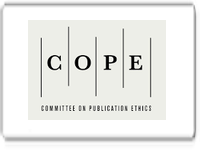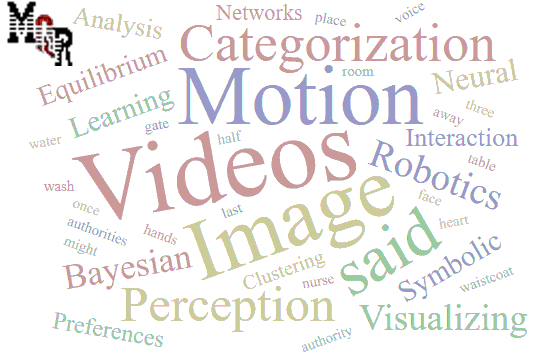Diagnóstico de un tumor Xantoastrocitoma Pleomórfico
DOI:
https://doi.org/10.56048/MQR20225.8.1.2024.3123-3138Palabras clave:
Xantoastrocitoma Pleomórfico; Diagnóstico; Resonancia Magnética; Biomarcadores; NeurooncologíaResumen
Introducción: El Xantoastrocitoma Pleomórfico (XAP) es un tumor cerebral raro y generalmente de bajo grado, que se presenta con desafíos significativos en su diagnóstico. Este tumor se caracteriza por su heterogeneidad clínica y patológica, lo que lo convierte en un punto de interés en el campo de la neurooncología.
Objetivo: El objetivo de esta investigación es revisar y sintetizar las metodologías de diagnóstico actuales para el Xantoastrocitoma Pleomórfico, identificando las técnicas más efectivas y las tendencias emergentes en su identificación y clasificación.
Metodología: Se realizó una búsqueda exhaustiva en bases de datos como PubMed, Scopus y Web of Science, utilizando palabras clave relacionadas con el Xantoastrocitoma Pleomórfico y su diagnóstico. Se incluyeron artículos en inglés y español, desde el año 2017 hasta el 2023, seleccionando estudios que proporcionan datos sobre características clínicas, diagnóstico, tratamiento y pronóstico de XAP.
Resultados: Los estudios revisados indican que la resonancia magnética (RM) es la herramienta diagnóstica más importante para el XAP, revelando típicamente una lesión bien circunscrita con realce después de la administración de contraste. La biopsia y el examen histopatológico son cruciales para el diagnóstico definitivo, mostrando la presencia de células pleomórficas y áreas de xantomización.
Conclusión: El diagnóstico preciso del XAP se basa en una combinación de características clínicas, radiológicas y patológicas. A pesar de los avances en la imagenología y la patología, el diagnóstico definitivo sigue dependiendo de la histología. La comprensión de las características moleculares puede ofrecer nuevas perspectivas para el diagnóstico y tratamiento.
Descargas
Métricas
Cited
DOI: 10.56048![]()
Citas
Aguirre-Cruz, L., Rodríguez-Pérez, C. E., Cruz-Aguilera, D. L. D. L., Acosta-Castillo, G. I., Ruano-Calderón, L., Martínez-Moreno, M., & Sotelo, J. (2020). Epidemiología descriptiva y cambios en la frecuencia de tumores astrocíticos en el Instituto Nacional de Neurología y Neurocirugía de México. salud pública de méxico, 62(3), 255-261. https://www.scielo.org.mx/scielo.php?pid=S0036-36342020000300255&script=sci_arttext
Detti, B., Scoccianti, S., Maragna, V., Lucidi, S., Ganovelli, M., Teriaca, M. A., ... & Livi, L. (2022). Pleomorphic Xanthoastrocytoma: a single institution retrospective analysis and a review of the literature. La radiologia medica, 127(10), 1134-1141. https://link.springer.com/article/10.1007/s11547-022-01531-3
Ebrahimi, A., Korshunov, A., Reifenberger, G., Capper, D., Felsberg, J., Trisolini, E., ... & Stichel, D. (2022). Pleomorphic xanthoastrocytoma is a heterogeneous entity with pTERT mutations prognosticating shorter survival. Acta Neuropathologica Communications, 10(1), 1-10. https://actaneurocomms.biomedcentral.com/articles/10.1186/s40478-021-01308-1
Finch, E. A., Elton, S. W., Huang, B. Y., Trembath, D. G., & Blatt, J. (2020). Long-term Efficacy of Single-agent Vemurafenib for Pleomorphic Xanthoastrocytoma. Journal of pediatric hematology/oncology, 42(2), 152–155. https://doi.org/10.1097/MPH.0000000000001395
Fouladi, M., Jenkins, J., Burger, P., Langston, J., Merchant, T., Heideman, R., ... & Gajjar, A. (2001). Pleomorphic xanthoastrocytoma: favorable outcome after complete surgical resection. Neuro-oncology, 3(3), 184-192.
Gaba, P., Puffer, R. C., Hoover, J. M., Wharen, R. E., & Parney, I. F. (2017). Perioperative outcomes in intracranial pleomorphic xanthoastrocytoma. Neurosurgery, 80(1), 105-111. https://journals.lww.com/neurosurgery/abstract/2017/01000/perioperative_outcomes_in_intracranial_pleomorphic.15.aspx
Hosono, J., Nitta, M., Masui, K., Maruyama, T., Komori, T., Yokoo, H., ... & Kawamata, T. (2019). Role of a promoter mutation in TERT in malignant transformation of pleomorphic xanthoastrocytoma. World neurosurgery, 126, 624-630. https://www.sciencedirect.com/science/article/abs/pii/S1878875018329188
Leaver, K. E., Zhang, N., Ziskin, J. L., Vogel, H., Recht, L., & Thomas, R. P. (2016). Response of metastatic glioma to vemurafenib. Neuro-Oncology Practice, 3(4), 268-271. https://academic.oup.com/nop/article/3/4/268/2583802
Lim, S., Kim, J.H., Kim, S.A., Park, E.S., Ra, Y.S., & Kim, C.J. (2013). Prognostic factors and therapeutic outcomes in 22 patients with pleomorphic xanthoastrocytoma. Journal of Korean Neurosurgical Society, 53(5), 281. https://synapse.koreamed.org/articles/1161265
Liu, J., Sun, Y., & Liu, X. (2020). Anaplastic pleomorphic xanthoastrocytoma: a case report and literature review. International Journal of General Medicine, 1581-1587. https://www.tandfonline.com/doi/full/10.2147/IJGM.S285989
Liu, X. F., Du, X., Zhang, X. T., Yang, M., Han, Y. M., & Lin, X. Y. (2019). Pleomorphic xanthoastrocytoma inside lateral ventricle: a rare case report and literature review. International Journal of Clinical and Experimental Pathology, 12(4), 1118. https://www.ncbi.nlm.nih.gov/pmc/articles/PMC6947081/
Li-wei, S. H. A. O., & Fu-lin, W. A. N. G. (2017). Anaplastic pleomorphic xanthoastrocytoma. Chinese Journal of Contemporary Neurology & Neurosurgery, 17(8), 616. http://cjcnn.org/index.php/cjcnn/article/view/1648
Ma, C., Feng, R., Chen, H., Hameed, N. F., Aibaidula, A., Song, Y., & Wu, J. (2018). BRAF V600E, TERT, and IDH2 mutations in pleomorphic xanthoastrocytoma: observations from a large case-series study. World neurosurgery, 120, e1225-e1233. https://www.sciencedirect.com/science/article/abs/pii/S1878875018320965
Mahajan, S., Dandapath, I., Garg, A., Sharma, M. C., Suri, V., & Sarkar, C. (2022). The evolution of pleomorphic xanthoastrocytoma: from genesis to molecular alterations and mimics. Laboratory Investigation, 102(7), 670-681. https://www.sciencedirect.com/science/article/pii/S0023683722002021
Mallick, S., Benson, R., Melgandi, W., Giridhar, P., & Rath, G. K. (2018). Grade II Pleomorphic Xanthoastrocytoma; a meta-analysis of data from previously reported 167 cases. Journal of Clinical Neuroscience, 54, 57-62. https://www.sciencedirect.com/science/article/abs/pii/S0967586817318295
Mathkour, M., Banerjee, S., Werner, C., Hanna, J., Abou-Al-Shaar, H., Dindial, R., ... & Ware, M. L. (2021). Cerebellar pleomorphic xanthoastrocytoma in the setting of neurofibromatosis type-I: does it portend a different prognosis? A case report and systematic review. Clinical Neurology and Neurosurgery, 200, 106346. https://www.sciencedirect.com/science/article/abs/pii/S0303846720306892
Melo, J. R. T., de Souza, A. L. P. B., Pereira, J. L. B., Reis, R. C., & de Almeida, M. A. C. (2008). Xantoastrocitoma pleomórfico na infância: relato de dois casos. Arquivos Brasileiros de Neurocirurgia: Brazilian Neurosurgery, 27(02), 64-66. https://www.thieme-connect.com/products/ejournals/pdf/10.1055/s-0038-1625533.pdf
Oh, T., Kaur, G., Madden, M., Bloch, O., & Parsa, A.T. (2014). Pleomorphic xanthoastrocytomas: institutional experience of 18 patients. Journal of Clinical Neuroscience, 21(10), 1767–1772. https://www.sciencedirect.com/science/article/abs/pii/S096758681400188X
Ono, T., Sasajima, T., Shimizu, H., Natsumeda, M., Kanamori, M., Asano, K., ... & Tohoku Brain Tumor Study Group. (2020). Molecular features and prognostic factors of pleomorphic xanthoastrocytoma: a collaborative investigation of the Tohoku Brain Tumor Study Group. Neurologia medico-chirurgica, 60(11), 543-552. https://www.jstage.jst.go.jp/article/nmc/60/11/60_oa.2020-0155/_article/-char/ja/
Perkins, S.M., Mitra, N., Fei, W., & Shinohara, E.T. (2012). Patterns of care and outcomes of patients with pleomorphic xanthoastrocytoma: a SEER analysis. Journal of Neurooncology, 110(1), 99–104. https://link.springer.com/article/10.1007/s11060-012-0939-8
Petruzzellis, G., Valentini, D., Del Bufalo, F., Ceglie, G., Carai, A., Colafati, G. S., ... & Cacchione, A. (2019). Vemurafenib treatment of pleomorphic xanthoastrocytoma in a child with Down syndrome. Frontiers in Oncology, 9, 277. https://www.frontiersin.org/journals/oncology/articles/10.3389/fonc.2019.00277/full
Robinson, L. J., Goold, E., Potter, S., Quigley, E. P., Jensen, R. L., & Mao, Q. (2023). A pleomorphic xanthoastrocytoma highlighting the morphological heterogeneity of this uncommon tumor. Journal of Neuropathology & Experimental Neurology, nlad097. https://academic.oup.com/jnen/advance-article/doi/10.1093/jnen/nlad097/7395076
Rutkowski, M.J., Oh, T., Niflioglu, G.G., Safaee, M., Tihan, T., & Parsa, A.T. (2016). Pleomorphic xanthoastrocytoma with anaplastic features: retrospective case series. World Neurosurgery, 95, 368–374. https://www.sciencedirect.com/science/article/abs/pii/S1878875016306106
Sartori, P., & Sgarbi, N. (2020). Lesiones oncológicas intracraneales de apariencia quística. Revista Argentina de Radiología/Argentinian Journal of Radiology, 85(01), 011-020. https://www.thieme-connect.com/products/ejournals/html/10.1055/s-0040-1718460
Scarpelli, D. B., Yu, Y., Tep, A. C., Bergue, B., Degnin, C., Chen, Y., ... & Jaboin, J. J. (2021). Pediatric Pleomorphic Xanthoastrocytoma: A National Database Inquiry on Current Treatment Approaches in the United States. Cancer Reports, 4(6), e1415. https://onlinelibrary.wiley.com/doi/full/10.1002/cnr2.1415
Shaikh, N., Brahmbhatt, N., Kruser, T. J., Kam, K. L., Appin, C. L., Wadhwani, N., ... & Lukas, R. V. (2019). Pleomorphic xanthoastrocytoma: a brief review. CNS oncology, 8(3), CNS39. https://www.ncbi.nlm.nih.gov/pmc/articles/PMC6880293/
Sullivan, J., Chandler, J., Lesniak, M., Tate, M., Sonabend, A., Kalapurakal, J., ... & Sachdev, S. (2023). Clinical outcomes for pleomorphic xanthoastrocytoma patients: an institutional experience. https://www.researchsquare.com/article/rs-2535551/v1
Tang, K., Kurland, D., Vasudevaraja, V., Serrano, J., Delorenzo, M., Radmanesh, A., ... & Snuderl, M. (2020). Exploring DNA methylation for prognosis and analyzing the tumor microenvironment in pleomorphic xanthoastrocytoma. Journal of Neuropathology & Experimental Neurology, 79(8), 880-890. https://academic.oup.com/jnen/article/79/8/880/5864503
Telemi, E., Martirosyan, N. L., Avila, M. J., Lukefahr, A. L., Le, C., & Lemole, G. M. (2019). Suprasellar pleomorphic xanthoastrocytoma: a case report. Surgical neurology international, 10. https://www.ncbi.nlm.nih.gov/pmc/articles/PMC6744826/
Vaubel, R., Zschernack, V., Tran, Q. T., Jenkins, S., Caron, A., Milosevic, D., ... & Giannini, C. (2021). Biology and grading of pleomorphic xanthoastrocytoma—what have we learned about it?. Brain Pathology, 31(1), 20-32. https://onlinelibrary.wiley.com/doi/full/10.1111/bpa.12874
Watanabe, N., Ishikawa, E., Kohzuki, H., Sakamoto, N., Zaboronok, A., Matsuda, M., ... & Matsumura, A. (2020). Malignant transformation of pleomorphic xanthoastrocytoma and differential diagnosis: case report. BMC neurology, 20(1), 1-5. https://bmcneurol.biomedcentral.com/articles/10.1186/s12883-020-1601-2
Wu, W., Zuo, P., Li, C., & Gong, J. (2021). Clinical features and surgical results of pediatric pleomorphic xanthoastrocytoma: Analysis of 17 cases with a literature review. World Neurosurgery, 151, e778-e785. https://www.sciencedirect.com/science/article/abs/pii/S1878875021006720
Yan, J., Cheng, J., Liu, F., & Liu, X. (2018). Pleomorphic xanthoastrocytomas of adults: MRI features, molecular markers, and clinical outcomes. Scientific RePortS, 8(1), 14275. https://www.nature.com/articles/s41598-018-32273-w
Zou, H., Duan, Y., Wei, D., Zhang, Y., Dai, J., Li, J., ... & Hu, Z. (2019). Molecular features of pleomorphic xanthoastrocytoma. Human Pathology, 86, 38-48. https://www.sciencedirect.com/science/article/abs/pii/S0046817718304726
Publicado
Cómo citar
Número
Sección
Categorías
Licencia

Esta obra está bajo una licencia internacional Creative Commons Atribución 4.0.
Los autores se comprometen a respetar la información académica de otros autores, y a ceder los derechos de autor a la Revista MQRInvestigar, para que el artículo pueda ser editado, publicado y distribuido. El contenido de los artículos científicos y de las publicaciones que aparecen en la revista es responsabilidad exclusiva de sus autores. La distribución de los artículos publicados se realiza bajo una licencia 
































































































